![[Case Study] Anime in Japan](https://www.d8aspring.com/hubfs/Eye-on-Asia/20170627-anime-in-Japan-train.jpeg)
One of the most popular forms of Japanese media is anime. It is the abbreviated pronunciation of ‘animation’. Outside Japan, it is generally used to refer to Japanese hand-drawn or computer animation. But for the purposes of this article, anime means all kinds of animation from anywhere in the world.
Because of the popularity of anime in Japan, dataSpring conducted a survey about Japanese people’s impressions about anime on TV and Movies. We examine Japanese consumers’ thoughts and ideas about local and foreign animation.
- Survey Method: Online Research
- Country: Japan Nationwide
- Targeting/Criteria: MF 15-59yo
- Survey Period: May 8, 2017 (Monday) - May 9, 2017 (Tuesday)
- Quota: Gender × Age (15-19/20-29/30-39/40-49/50-59) equal split
- Complete N: 500
FINDINGS:
A. One in three men in their 20's watch anime 'almost every day'
Q. Please describe how often you watch anime works. *Anime works also include animation movies.
1. Anime viewing frequency Male 20's / Male 30's
base: Male20’s (n=50)
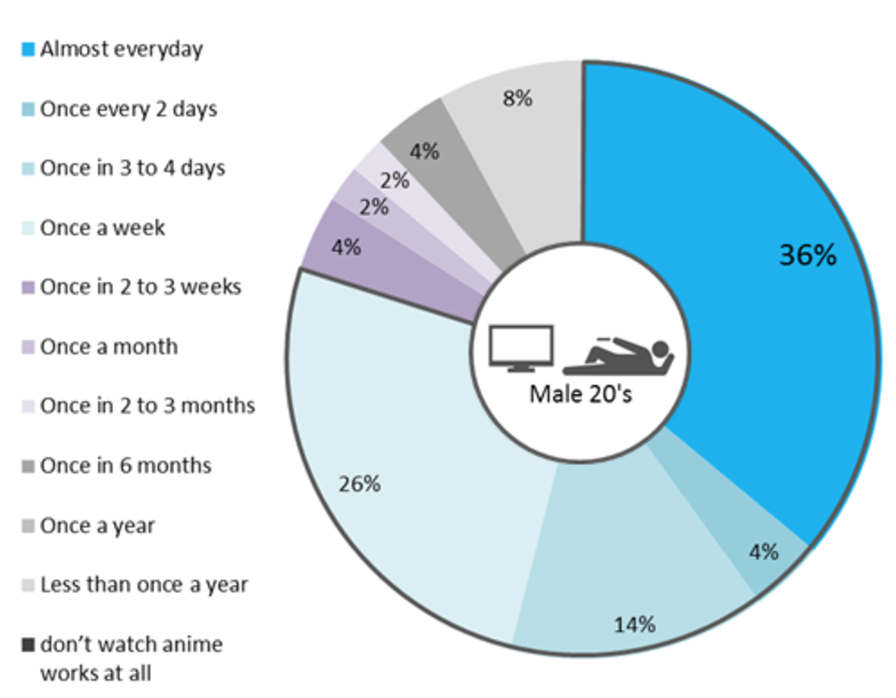
base: Male30’s (n=50)
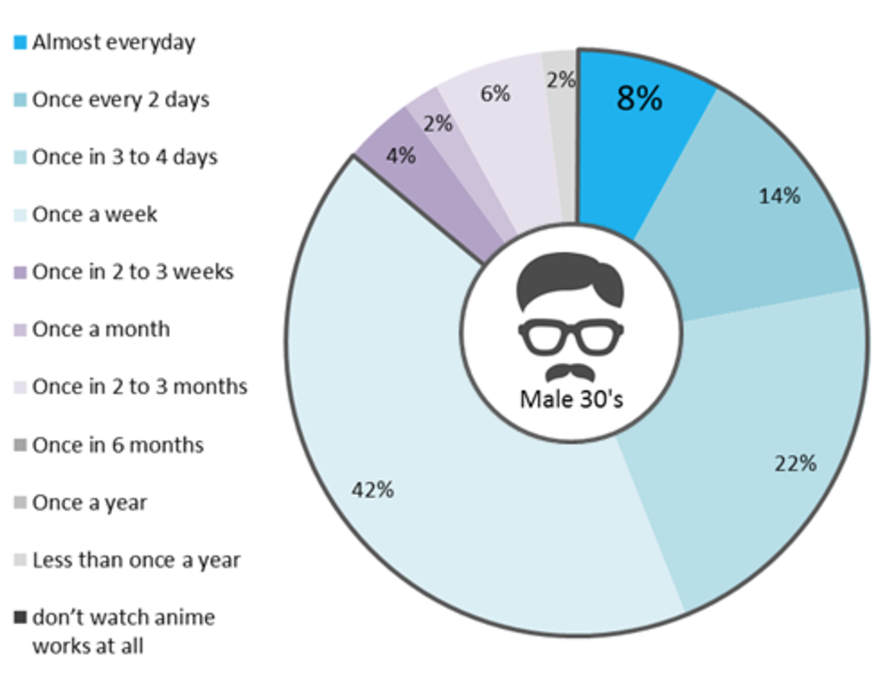
2. Anime viewing frequency by gender age
base: ALL (n=500)
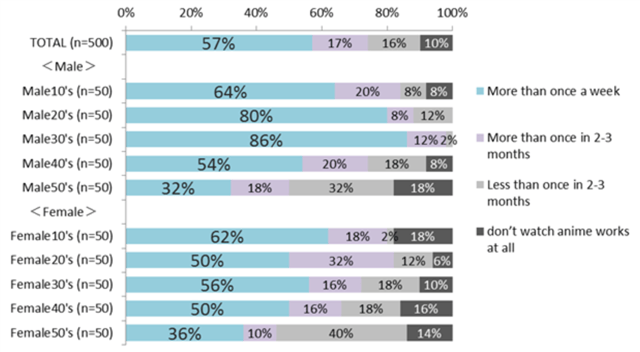
- The overall frequency of anime viewing is 'once a week or more' for 57% of respondents. 17% watch 'once in 2-3 months', 16% watch 'less than once in 2-3 months', and 10% 'don’t watch anime works at all'. This result means one in two people watch anime once a week.
- Of respondents who answered 'once a week or more' by gender and age group, 86% are males in their 30’s.
- However, looking at the breakdown of frequency, only 8% of males in their 30’s answered 'almost every day', while male in their 20’s account for 36%. This means that men in their 20's have higher viewing frequency.
B. The recognition rate of the movie ’Frozen’ is 98%, while the rating is 60%
Q. Please describe what applies to each anime work.
base:Total(n=500)
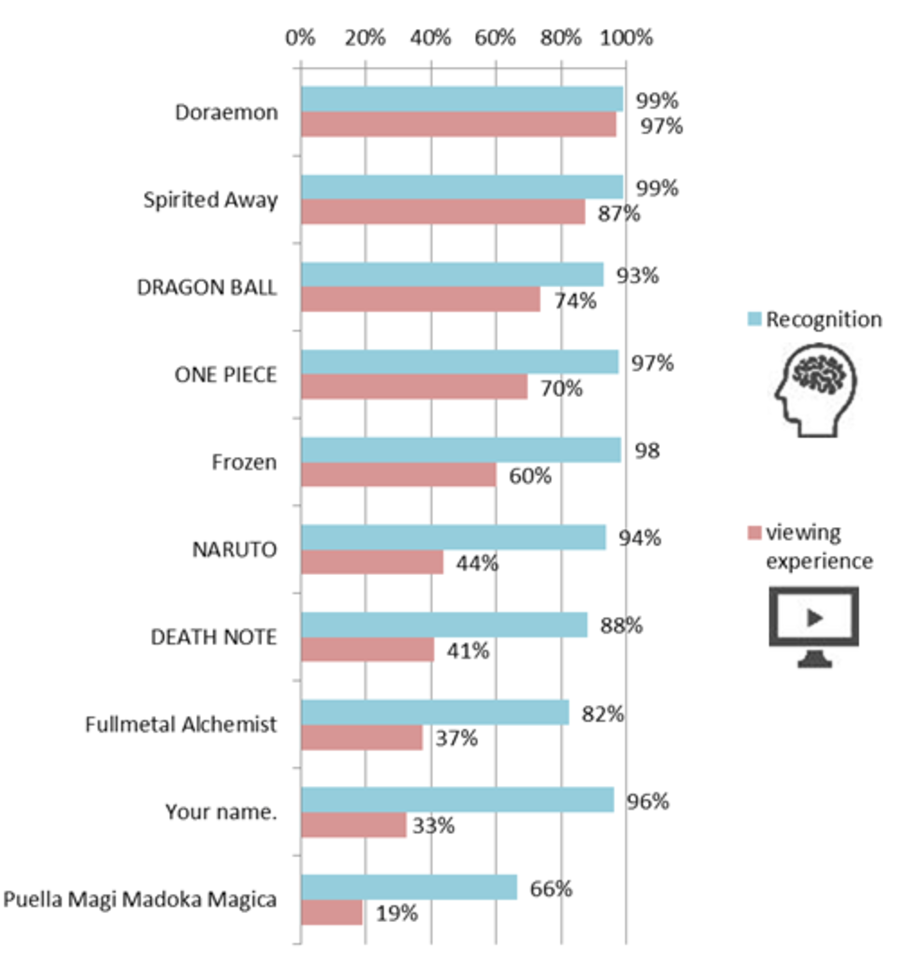
- We asked about the recognition and viewing experience of the 10 anime works.
- Doraemon which is a long-running program, exceeds 90% both in recognition and viewing experience.
- The anime work with the biggest difference between recognition and viewing experience is Your Name, which was released in 2016.
- Your Name DVD release is approaching this summer, and the viewing experience rate is expected to increase.
C. 44% of Dragon Ball viewers think that the anime “seems to be popular overseas”
Q. Please answer all impressions that applicable for each work.
base: Experienced viewers of each work
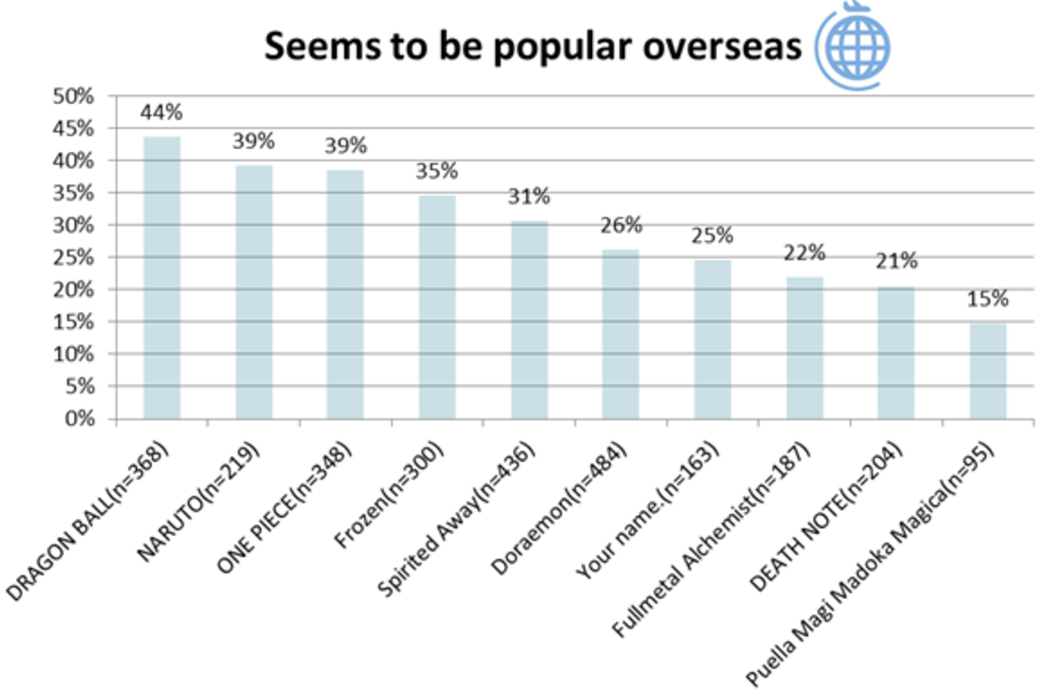
base: Experienced viewers of each work
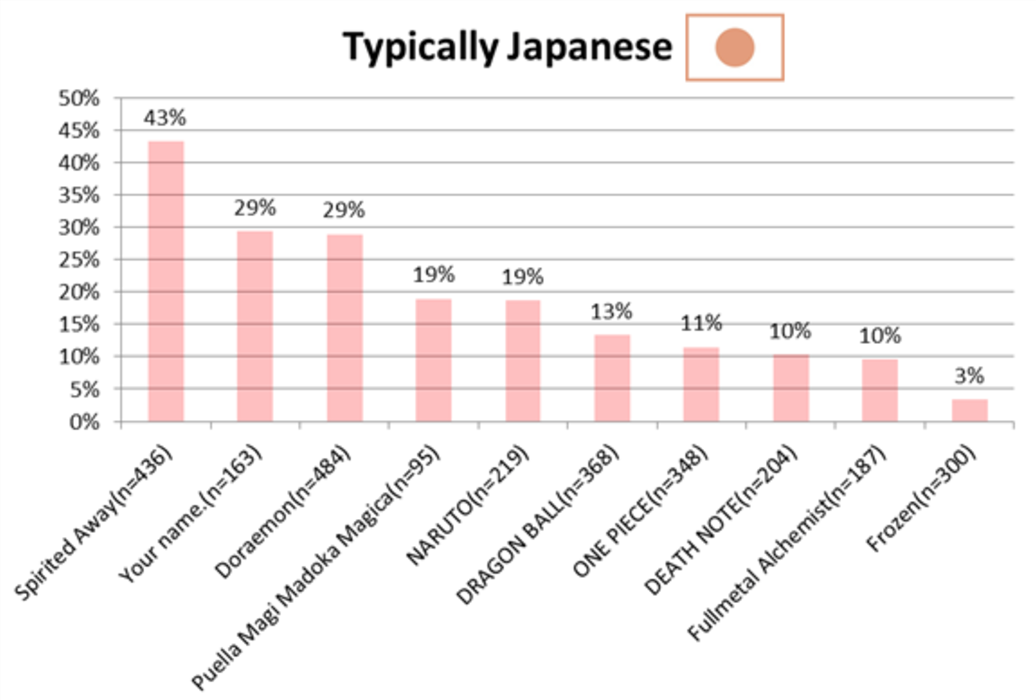
- We asked about the respondents' impressions of the anime works that they viewed. (20 kinds of impressions were presented)
- As for the impression “seems to be popular overseas”, Dragon Ball was the highest at 44%, followed by Naruto and One Piece at 39%. The boys' manga original works accounted for top ranks.
- For the impression 'typically Japanese', Spirited Away is the highest at 43%, followed by Your Name. Meanwhile, Doraemon accounts for 29%.
D. As a result of correspondence analysis, it can be divided into five categories
Correspondence analysis was carried out by using the data of 10 anime works’ impressions.
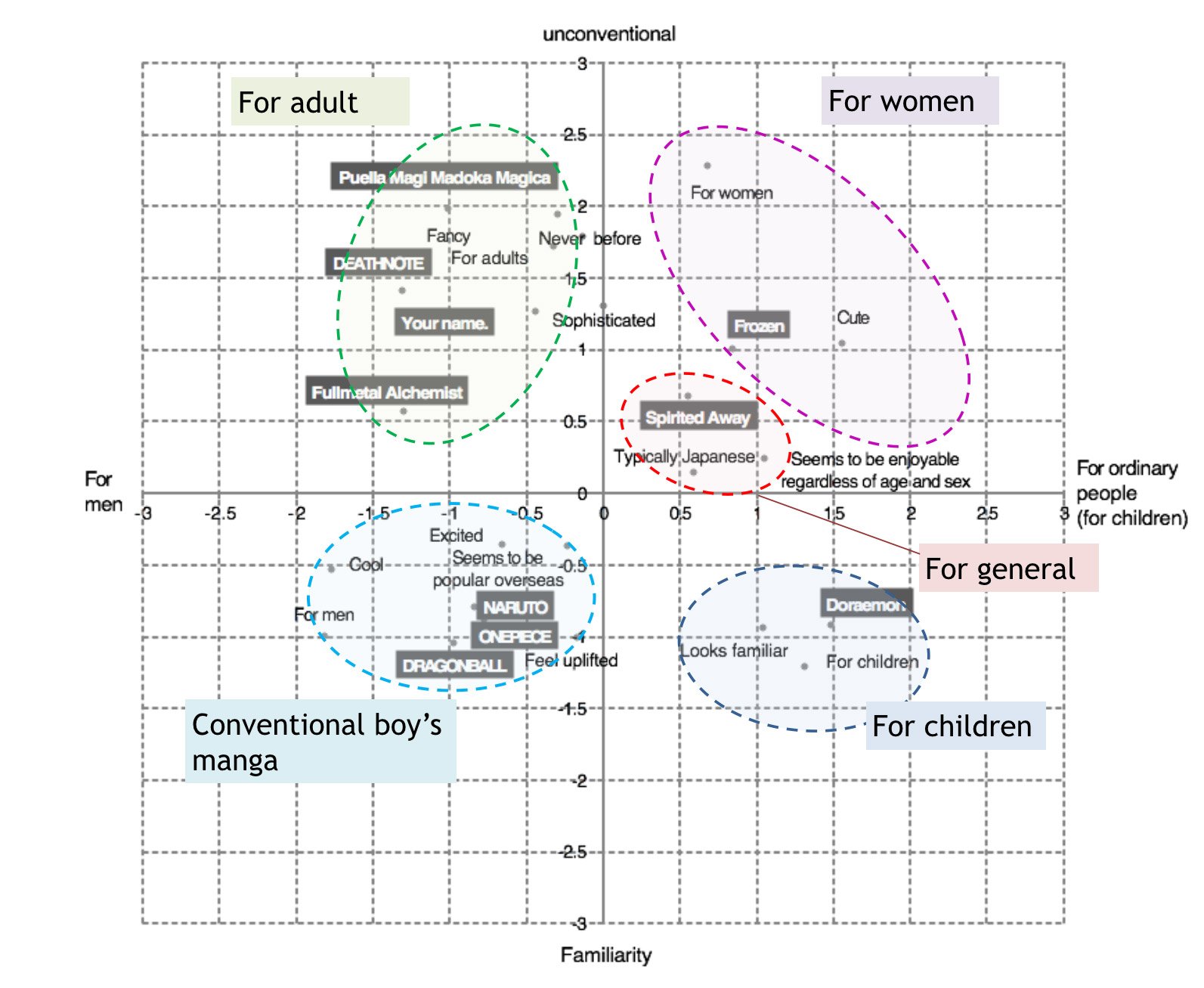
- We were able to divide them into five categories, “cute, for general viewers”, “typically Japanese, for general viewers”, “friendly, for children”, ”conventional boy’s manga”, and “unconventional, for adult viewers”.
We hope this was an educational and interesting read for you! If you're in need of Japanese consumer insight, don’t hesitate to CONTACT US or download our panel book and check out the wide reach of our sampling capabilities.
Check out our other Eye on Asia articles about Japan, like the profile overview of the modern Japanese consumer and a feature about the home sharing law Also, check out this feature about dataSpring's Japanese online research panels.
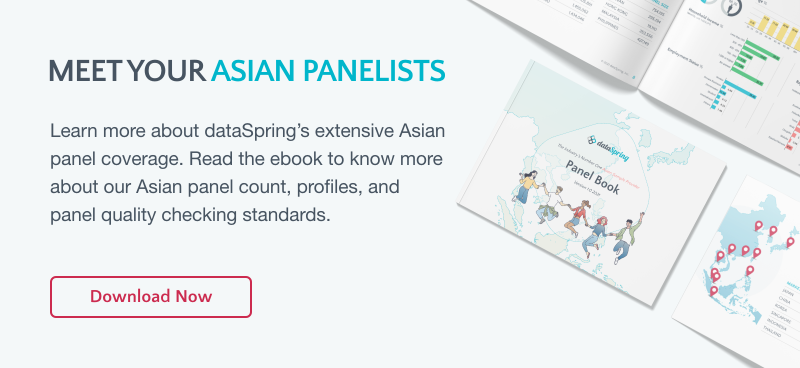

 Download Panel Book
Download Panel Book


